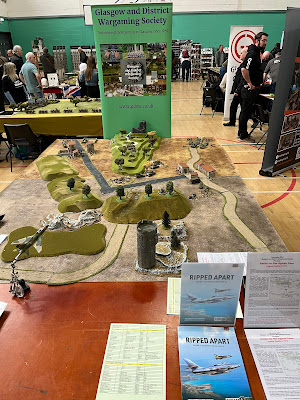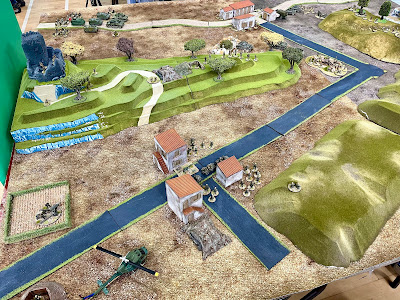This was my library pick this month. Gordon Thorburn focuses on the Black Watch and the Cameronians contribution to the Chindits campaign in Burma during WW2. It probably reached my local library because the Cameronians were a local regiment here in Ayrshire. The regiment arose out of the Covenanters and one of the most radical, Richard Cameron. He died at the Battle of Airds Moss in 1680 fighting against Charles II, and the volunteers were subsequently a staunchly Protestant loyalist regiment that fought against the Jacobites. This makes it a somewhat unusual British regiment, having fought against the Crown initially.
The author takes us through the Burma campaign's early stages and both regiments' involvement. Then up steps Orde Wingate the founder of the Chindits. Wingate's ideas on long-range penetration and guerrilla warfare were inspired by his experiences in Palestine during the Arab revolt of the 1930s. He proposed the formation of special forces units that would operate deep behind enemy lines, disrupting Japanese communications and supply lines and harassing their troops. In 1942, Wingate was allowed to put his ideas into action when he was tasked with organising a long-range penetration force to operate in Burma. This force became known as the Chindits, named after the mythical Burmese lion creatures. The force was created despite the fierce opposition of the Indian Army HQ, but he had the support of Churchill and Mountbatten.
The author takes us through the Chindit campaigns using personal testimonies from the soldiers in both regiments and the war diaries. The first operation did not go well. It did distract the Japanese, who were preparing for their offensive against India. Still, the lack of supplies and dehabilitation meant 818 of 3,000 men went missing, and only 600 recovered sufficiently to fight again. Lessons learned: the next incursion was better planned with fortress bases created that could be supplied by air, and the sick could be evacuated.
As is often the case with books like this, you remember the small details. For example, the voice boxes of the mules were cut out so that their braying didn't attract the enemy. And bandages in green because white ones attracted snipers. The classic bearded Chindit look did not apply to the Scottish regiments because the colonels wouldn't allow it.
Wingate was the driving force of the Chindit operations, and disaster struck when his Mitchell bomber crashed in the Bishenpur Hills. There had been trouble with one of the engines, and Wingate ignored weather warnings, although other theories abound. His replacement, Major-General Lentaigne, was an experienced commander but never really bought into the concept of long-range operations. He had viewed Wingate as an upstart with crazy schemes.
The real enemy of Chindit operations was illness and disease, exacerbated by the long marches in horrendous terrain, living on inadequate rations. Incapacitation rates of 75% were typical for all the brigades involved in the last operation. The medical officer's report makes grim reading, highlighting the lack of reinforcements, the length of the campaign and class distinctions in the provision of equipment and medical evacuation. Despite all this, morale was much better than you might expect.
It is difficult to evaluate the overall impact of Chindit operations, not least because of limited data. They did disrupt Japanese operations and inflicted casualties, as well as providing a morale boost in theatre and at home. However, the strategic impact was limited, and whether the heavy losses were worthwhile is questionable. For the whole of Operation Thursday, 1,035 were killed, 2,531 wounded, and 473 missing. There were also 7,217 hospital admissions; of the remaining effectives, 50% were declared unfit for active service on their return. They were pioneers of jungle warfare and unwitting volunteers in a gigantic, disorganised, unintentional medical experiment.
 |
| My 28mm Far East models in action on the tabletop |

















































